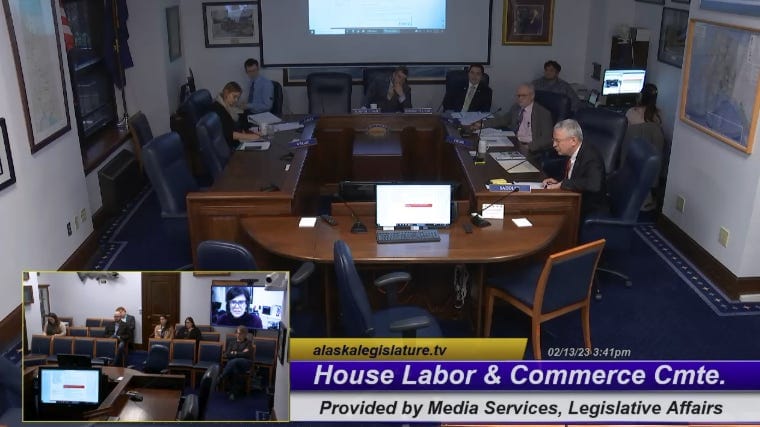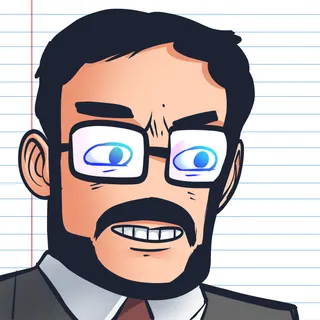Day 31: Who should pay?
Child care providers warn of $30 million shortfall. Dunleavy rolls out his budget amendments

Happy Elizabeth Peratrovich Day, Alaska!
In this edition: Catching up on an interesting hearing on child care from earlier this week where providers warned of an imminent shortfall in the system as federal covid-19 money expires. While many legislators were sympathetic to the situation, some were more concerned in whether affordable and quality child care was actually a realistic goal and, if so, who’d have to pay. Meanwhile, Gov. Dunleavy rolled out budget amendments adding more than $117 million to state spending and pushing the deficit past the $400 million mark.
Current mood: 💸
Child care providers warn of $30 million shortfall

We’ve heard a lot of different reasons for Alaska’s workforce problems and ongoing exodus of Alaskans, but one of the common threads through all of it is the sorry state of Alaska’s child care system. High costs, low availability and long wait lists have forced young families to make tough decisions when it comes to working parents.
The House Labor and Commerce Committee held a hearing on the state of the child care system earlier this week, with the takeaway being that child care is not widely available and what’s available is prohibitively expensive. A big issue, the providers pointed out at the hearing, is that the child care business is a tough go. It’s hard to find good employees, pay them enough and charge enough to keep it in business.
Like with education and many other parts of the state in recent years, the greatest of those problems were papered over by an influx of federal covid-19 dollars that provided sizeable grants to providers large and small. Now, most of those grants are expiring and leaving a major question mark over the future of child care.
“To help in the short-term there’s a need for about $30 million,” thread CEO Stephanie Berglund told the committee. “$30 million just for this next year.”
Rep. Dan Saddler, R-Eagle River, asked if there was any sort of ideal child care situation in the past where things were working out well that they should return to.
“I’ve been working at thread for 16 years and I have actually yet to meet a family that has found accessible, affordable quality care that meets their needs,” Berglund replied. “Usually one of those levers is off.”
Berglund, other child care providers and even some sympathetic legislators were open that the solution here is government subsidies because paying for good, qualified staff would require charging rates that are so high that few families could realistically afford the service. Rep. Zack Fields, D-Anchorage, has proposed legislation that would allow child care providers to work together effectively as a union to help direct available child care funds to the widest benefit.
“My question is is high quality, affordable child care a unicorn?” Saddler responded. “Something to strive for but to never achieve? Or is there some place where it’s being achieved?”
“Yes, there is opportunity for us to achieve that,” Berglund replied. “There are many other state models and other opportunities for us to look at. We’re happy to provide some more concrete solutions. I think it’s really a conversation around which levers to pull. If it’s for the workforce, if it’s for the small child care businesses, if it’s more for helping to decrease costs for families. There’s lots of opportunities for a myriad of solutions.”
Saddler turned to the cost of the situation, asking, “Who should be responsible for providing child care? Ultimately, who should pay for child care?”
“We believe it’s the responsibility of all of us. Right now, I mentioned families are shouldering that burden,” Berglund replied. “We know there needs to be more investment at the federal, state and local level, but we also know that we can partner with philanthropy partners and businesses to be more engaged to support their employees as well.”
“All of us? And who is us?” Saddler replied.
“All of us in the state have a responsibility for our youngest Alaskans to support a thriving economy,” Berglund replied.
Why it matters: The accessibility and affordability of child care has been a significant and ongoing issue, which has been exacerbated by the covid-19 pandemic. It’s frequently cited as one of the significant issues hampering the state’s economic recovery as many families are finding it makes more financial sense for a parent to stay home rather than deal with the struggles of finding good child care. And even families that find child care are often met with additional struggles, like inconsistent availability that still requires families to juggle work and child care.
Many have pointed out that improving accessibility to child care would make things far better for young working families and, thus, be better for the overall economy and, thus, better for the state. When Saddler asks “Who should pay?” it’s a narrow look at a situation when the answer to “Who benefits” is everyone.
The Alaska Memo by Matt Buxton is a reader-supported publication. To receive new posts and support my work, consider becoming a free or paid subscriber.
Dunleavy rolls out budget amendments

Wednesday was the deadline for Gov. Mike Dunleavy to deliver his amendments to the state budgets. This year didn’t bring the massive, red-alert shake-up we saw in the governor’s first year, instead bringing $117 million of new spending that goes to areas like pubic defenders, Medicaid match and some other targeted grants.
The most notable area of increased spending comes for the public defenders office, which faced such dire under-staffing problems that the Nome office warned it will have to decline some cases because it can’t meet the ethical and constitutional requirements for criminal defense with their current staff. The proposed $8.3 million increase comes on top of $6.2 million that had already been proposed, making for a roughly 22% increase to the agency’s funding.
“I’m not going to say that this is a silver bullet,” said James Stinson, director of the Office of Public Advocacy, at the news conference announcing the funding, according to a report by the Alaska Beacon. “There’s always going to be challenges with staffing and other things. But this is a pathway forward.”
The additional spending brings the state’s anticipated budget deficit to more than $400 million for the upcoming fiscal year. Gov. Dunleavy has yet to propose just how he plans to fill that deficit—or the subsequent deficits expected over the next decade—beyond the largely nebulous plan for carbon sequestration, a plan that would take years for the Legislature to study and more to implement.
Meanwhile, several legislators have pointed out throughout this session that the $2.5 billion currently penciled in for this year’s dividend is the largest in state history. Sen. Bert Stedman, the Sitka Republican who co-chairs the Senate Finance Committee, has floated the idea of reducing the dividend to about $1,300 would free up enough money for a sizeable increase to the school funding, erase some $900 million in municipal debt and balance the budget.
“We’re going to have to make a choice. Do we want to teach our kids to cash checks?” Stedman asked at a news conference earlier in February. “Or do we want to teach them to read and write and do arithmetic?”
The highlights, as highlighted by the Dunleavy administration are as follows:
- $8.3 million for the Public Defender Agency and the Office of Public Advocacy, which would bring the same 20% pay raise that other state attorneys already received in last year’s budget.
- $9 million for the Division of Public Assistance to continue work on its backlog as well as $54 million—$17 million of which is state funds—to modernize the state’s eligibility determination system.
- Cobbles together three different funds to meet the roughly $105 million match to secure nearly $300 million in federal funds for the Alaska Marine Highway System
- $7.5 million for a Department of Public Safety patrol vessel replacement
- $10 million ($5 million each) to Alaska Seafood Marketing Institute (ASMI) and Alaska Travel Industry Association (ATIA)
- $7.5 million for Alaska Energy Authority (AEA) Renewable Energy Grants
- $8 million for wildfire suppression
- $24.4 million for Medicaid rates and match
- $5 million for State assumption of Section 404 Permitting Primacy
- $2.8 million for 10 more VPSOs and housing allowances
- $250,000* to assign a dedicated Alaska State Trooper to investigate in-custody inmate deaths and reported felony and misdemeanant criminal cases within the correctional facilities.
What’s not there
Given the start of the session’s focus on education, child care and workforce issues, it’s notable that Dunleavy’s budget amendments don’t include any additional funding for public schools, child care or retention issues beyond the most pressing ones raised by the Public Defender Agency. Those issues could be addressed through later legislation or legislator-driven amendments to the budget.
Stay tuned.
The Alaska Memo by Matt Buxton is a reader-supported publication. To receive new posts and support my work, consider becoming a free or paid subscriber.
The Alaska Memo Newsletter
Join the newsletter to receive the latest updates in your inbox.




